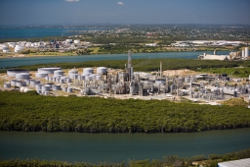|
|
Estuarine and marineMarine and estuarine environments are subjected to a range of pressures that can affect health of habitats and species[1]. These pressures can be reduced by effective management and planning frameworks. Quick facts
Resource exploration and extraction e.g. oil, gas sand, coral, fish etc. as well as the transport of these resources, although important, places pressures on esturine and marine areas. New energy and water systems and other shoreline industries, bring not only important initiatives in wealth generation, but also a major new set of risks to our waters that will require strategic and regional management.[1] Nearshore development is proceeding quickly, replacing vegetated landscapes with hard surfaces that interrupt wetland functions and estuarine flows. Land–based sources of pollution and expanding pressure on coastal lands continue to be significant despite strong improvements in land–use planning and the management of many point sources of pollution.[1] These are just some of the pressures impacting on the Queensland coastline. Find out more through the links below. Additional information
References
Last updated: 29 January 2016 This page should be cited as: Department of Environment, Science and Innovation, Queensland (2016) Estuarine and marine, WetlandInfo website, accessed 8 May 2025. Available at: https://wetlandinfo.des.qld.gov.au/wetlands/management/pressures/marine-threats.html |

 — Department of the Environment, Tourism, Science and Innovation
— Department of the Environment, Tourism, Science and Innovation


